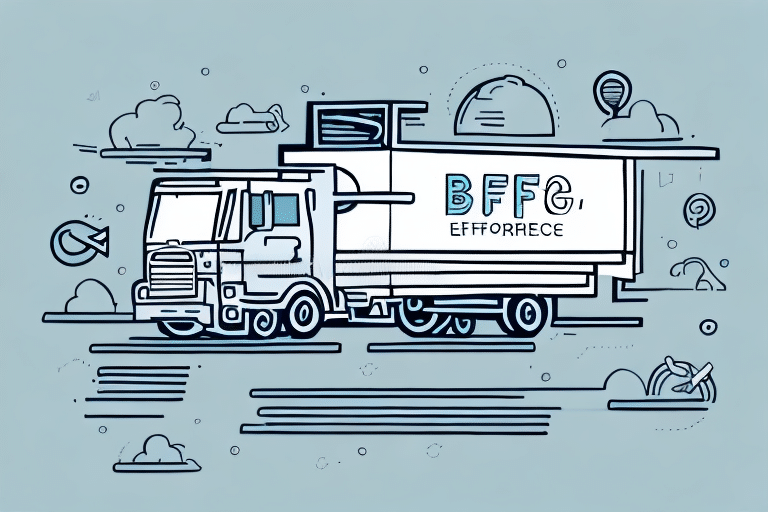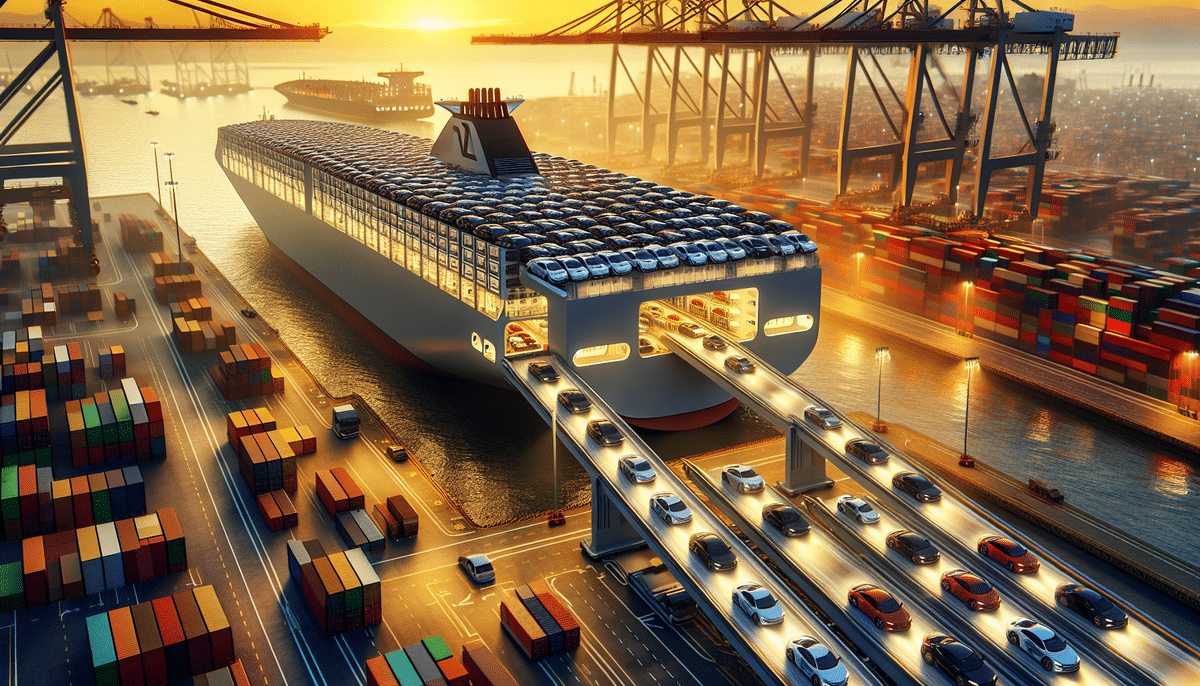How to Safely and Efficiently Ship Oversized Items
Shipping oversized items such as large machinery, vehicles, or industrial equipment presents unique challenges that require careful planning and execution. Ensuring the safe and efficient transit of such cargo involves understanding the complexities of transportation methods, packaging requirements, legal regulations, and more. This comprehensive guide explores the essential aspects of shipping oversized items, providing detailed insights and practical tips to help you navigate the process effectively.
Understanding the Challenges of Shipping Oversized Items
Shipping oversized items demands meticulous attention to detail due to their size, weight, and fragility. These items often require specialized handling to prevent damage and ensure safety throughout the shipping process.
Safety Hazards
Oversized cargo poses significant safety risks not only to the goods being transported but also to the personnel involved in the loading and unloading processes. Improper handling can lead to accidents, equipment damage, and even legal liabilities.
Transportation Methods
Choosing the appropriate transportation method is crucial. Depending on the dimensions and weight of the cargo, options may include:
- Flatbed Trucks: Ideal for large, heavy items and offers flexibility in loading and unloading.
- Cranes and Lifts: Necessary for lifting and securing oversized items during transit.
- Barges and Ships: Suitable for international shipments, especially for extremely large or heavy cargo.
Working with experienced logistics professionals can help determine the most effective transportation strategy for your specific needs.
Cost-Effective Shipping Methods
Selecting a cost-effective shipping method involves balancing speed, cost, and the specific requirements of your oversized shipment.
Air Freight
Air freight is the fastest method of shipping but can be significantly more expensive. It's best suited for items that need to reach their destination quickly and can withstand the handling involved in air transport.
Sea Transport
Sea transport is a more economical option for large and heavy items that do not require rapid delivery. It is especially effective for international shipments, offering the capacity to handle oversized cargo efficiently.
Land Transport
Land transport via trucks is versatile and can be tailored to handle a wide range of oversized items. It's essential to consider factors such as road conditions, traffic regulations, and potential obstacles when planning land transport.
Packaging and Securing Oversized Items
Proper packaging is vital to protect oversized items from damage during transit. It involves selecting the right materials and ensuring secure placement within the shipping container.
Choosing Packaging Materials
The packaging materials must be robust enough to support the weight and size of the cargo. Common materials include:
- Pallets and Crates: Provide a stable base for the cargo and facilitate handling.
- Protective Padding: Shields the goods from shocks and impacts during transit.
- Shrink Wrapping: Secures the cargo and protects it from environmental factors.
Ensure that the packaging is appropriately sized to prevent shifting and potential damage.
Weight Distribution
Even weight distribution is critical to maintaining the stability of the cargo. Uneven weight can lead to instability, increasing the risk of accidents and damage. Utilizing pallets or crates helps in evenly distributing the weight across the shipping vehicle or container.
Securing the Cargo
Properly securing the cargo involves using straps, ties, or other restraints to prevent movement during transit. This step is essential to avoid shifting that could compromise the integrity of the shipment and pose safety hazards.
Legal Considerations for Shipping Oversized Items
Compliance with legal regulations is paramount when shipping oversized items. Failure to adhere to these laws can result in fines, delays, or the rejection of the shipment.
Permits and Licenses
Shipping oversized items often requires special permits or licenses, which vary depending on the size of the cargo and the route of transit. It's essential to obtain these permits in advance to avoid legal complications.
Environmental Regulations
Certain oversized items, especially those involving hazardous materials, must comply with environmental regulations to prevent pollution and other environmental hazards. Ensuring compliance helps in avoiding legal penalties and contributes to sustainable shipping practices.
Documentation and Labeling
Accurate documentation and clear labeling are critical components of shipping oversized items. They facilitate smooth transit and help in avoiding delays or misunderstandings.
Preparing Documentation
Necessary documentation may include:
- Bill of Lading: A legal document that outlines the details of the shipment.
- Customs Papers: Required for international shipments to facilitate customs clearance.
- Detailed Descriptions: Includes weight, dimensions, and any special handling instructions.
Proper Labeling
Labels should clearly indicate that the shipment contains oversized items, along with any pertinent handling instructions or warnings. This ensures that all parties involved are aware of the special requirements of the shipment.
Best Practices for Loading and Unloading
Efficient and safe loading and unloading practices are essential to prevent damage to both the cargo and the personnel involved.
Using Specialized Equipment
Employing cranes, forklifts, and other machinery designed for handling oversized items can facilitate smoother operations and reduce the risk of accidents.
Hiring Professional Services
Engaging professional logistics companies with expertise in handling oversized shipments ensures that loading and unloading processes are conducted safely and efficiently.
Insurance and Liability Considerations
Protecting your shipment through appropriate insurance coverage is crucial to mitigate financial risks associated with damage or loss during transit.
Insurance Coverage
Ensure that your shipment is adequately insured to cover potential damages. Different insurance policies offer varying levels of coverage, so it's important to choose one that aligns with the value and risk associated with your cargo.
Understanding Liability
Clarify the terms of liability in your shipping contracts to understand who is responsible in the event of damage or loss. This clarity helps in preventing disputes and ensures that you are adequately protected.
Tracking and Monitoring Your Shipment
Real-time tracking provides visibility into the status of your oversized shipment, allowing you to monitor its progress and address any issues promptly.
GPS Tracking Technology
Utilizing GPS tracking enables continuous monitoring of the shipment's location, ensuring that you are aware of its status at all times.
Integrated Logistics Software
Advanced logistics software can offer comprehensive tracking solutions, integrating data from various sources to provide a holistic view of the shipment's journey.
The Future of Shipping Oversized Items: Innovations and Trends
The shipping industry is continuously evolving, with new technologies and methodologies enhancing the efficiency and safety of transporting oversized items.
Automation and Robotics
The adoption of automation and robotics in loading and unloading processes reduces human error and increases operational efficiency.
Sustainable Shipping Practices
Innovations in packaging materials and transportation methods are contributing to more sustainable and environmentally friendly shipping practices.
Artificial Intelligence Integration
AI is being integrated to optimize shipping routes, predict potential delays, and enhance overall logistics management.
In conclusion, shipping oversized items requires a strategic approach that addresses the unique challenges associated with such shipments. By understanding the complexities, adhering to legal requirements, and utilizing advanced technologies, you can ensure that your oversized cargo is transported safely and efficiently to its destination.








